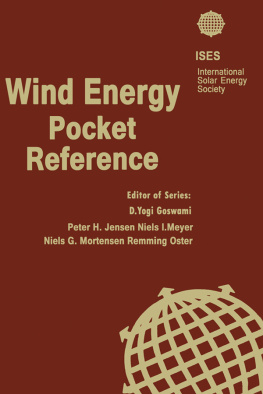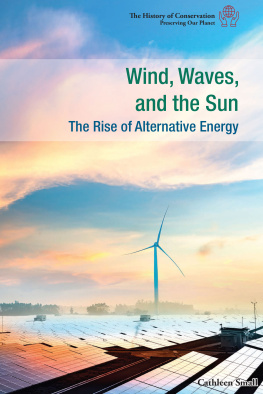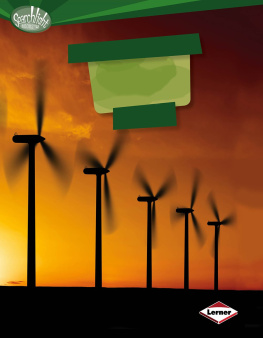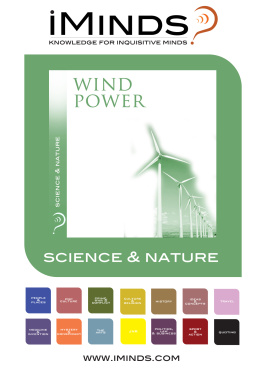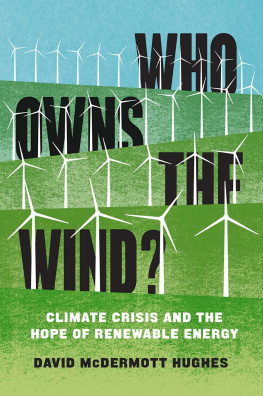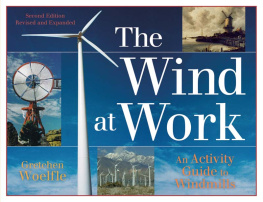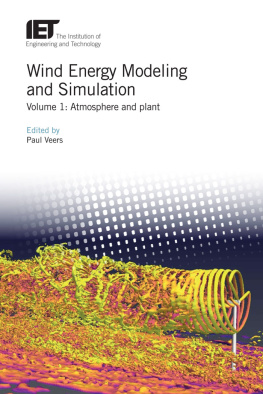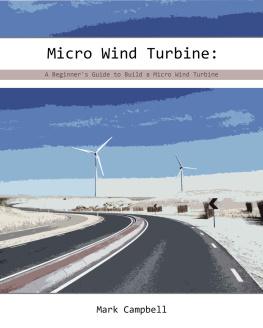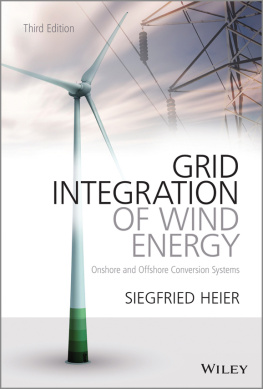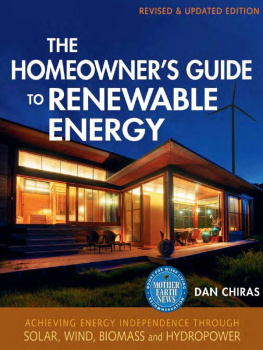
ISES
International
Solar Energy
Society
Wind Energy
Pocket
Reference
Editor of Series:
D.Yogi Goswami
Peter H. Jensen Niels I. Meyer
Niels G.Mortensen Flemming Oster
PREFACE
The IS ES Wind Energy Pocket Reference contains useful information and data for wind energy developers, energy planning authorities, designers, technicians and those generally interested in wind power systems and their potential in energy supply systems.
The pocket book contains data, equations and figures for global distribution of wind energy, wind turbine technologies, turbine energy efficiency, systems considerations, and annual energy production under different local conditions, organizational schemes and economy of wind power.
The information is gathered from published literature supplemented by personal information of experts from energy agencies, utilities, universities and other energy research institutions, and from the wind energy industry and different types of wind power producers. We wish to thank all who have contributed information to this pocket book. We also would like to thank Ms. Barbara J. Graham, Assistant Editor, whose hard work and dedication was essential in compiling this volume.
Authors: Peter H. Jensen, Ph.D.*, Niels I. Meyer, Ph.D.**, Niels G. Mortensen, Ph.D.* and Flemming ster, Ph.D.*
*Wind Energy Department, Riso National Laboratory for Sustainable Energy Technical University of Denmark.
** Dept. of Civil Engineering, Technical University of Denmark
Editor:
D. Yogi Goswami, Ph.D., P.E.
Clean Energy Research Center
College of Engineering
University of South Florida
Tampa, USA
The Wind Energy Pocket Reference is the second in a series of pocket books to be published by ISES. The first in the series was the Solar Energy Pocket Reference (2005).
We hope this series will serve the practitioners of the various renewable energy fields.
Torben Esbensen
ISES President
(2006-2007)
First published by Earthscan in the UK and USA in 2007
For a full list of publications please contact:
Earthscan
2 Park Square, Milton Park, Abingdon, Oxon OX14 4RN
711 Third Avenue, New York, NY 10017
Earthscan is an imprint of the Taylor & Francis Group, an informa business
2007 ISES. Published by Taylor & Francis
All rights reserved. No part of this book may be reprinted or reproduced or utilised in any form or by any electronic, mechanical, or other means, now known or hereafter invented, including photocopying and recording, or in any information storage or retrieval system, without permission in writing from the publishers.
ISBN 13: 978-1-84407-539-3 (pbk)
The series includes the following topics:
Solar Energy Reference Pocket Book
2005 ISES ISBN 0-9771282-0-2
Wind Energy Reference Pocket Book
2007 ISES ISBN 0-9771282-1-0
Bio Energy Reference Pocket Book
2009 ISES ISBN 0-9771282-2-9
TABLE OF CONTENTS
In 1900, wind turbines were typically used for grinding, water pumping and other rural mechanical energy needs. At that time a Danish inventor Poul la Cour at Askov Hjskole (Folk High School) made experiments with Dutch wind mills converting them to fast running electricity production turbines. La Cour constructed wind tunnels for the purpose of developing aerodynamically shaped rotor blades.
The wind turbine history is summarized in emphasizing the Danish case as an example. Electrification of rural Danish areas was the motivation behind of the first commercial round of electricity producing turbines. During the Second World War wind energy flowered again followed by post war development of the medium sized Danish Gedser turbine. This turbine was the model for the modern development following the oil crises in the 1970s.
Many studies have estimated the total global wind energy resources. These studies have confirmed that the world's wind resources are extremely large and well distributed across almost any region and country. Lack of resource is therefore unlikely to become a limiting factor in the utilization of wind power for electricity generation. gives estimates of the global wind production potential (Rasmussen and ster, 1990; BTM Consult ApS, 2007).
Table I.1: Wind Turbine History Focusing on Danish Turbines and Electricity Production| Year | 12351900 | Application | Comments | Regulation |
|---|
| 12351900 | Wind roses, Dutch windmills | Mechanical energy in agriculture | Grinding mills, water pumping etc |
| 18901910 | Horizontal axis turbines with 34 blades | Electricity production | Pioneered by Danish Poul la Cour at Askov Folk High School (Ref. I.1.) | Yawing control |
| 19101950 | Horizontal axis turbines with 34 blades | Electricity production | Pioneered by Danish Poul la Cour at Askov Folk High School (Ref. I.1.) | Yawing control |
| 19101950 | Horizontal axis, 3 blades. Turbine sizes of up to 5 MW | Electricity production in local power plants | Further developments in Denmark. UK, USA and USSR. Eventually outcompeted by cheap Oil | Spoiler rail for control |
| 19501967 | Horizontal axis, 3 blades. 200 kW stall controlled Danish Gedser Wind Turbine | Electricity production, utility demonstration prefect | The Gedser Mill (inventor Jons Juul) became the mother of modem Danish wind turbines | Stall control |
| 1974 | Start of modem phase of wind power pioneered by Danish manufacturers and developers | Grid-connected electricity production | Increasing turbine capacity from 22 kW in 1975 (inventor Chr. Riisager) Increasing sizes up to 6.5 MW in 2007 | Stall or pitch control |
| 1980 | Pitch controlled turbines |
| 1991 | First offshore wind farm in the Danish part of the Baltic Sea | Eleven 450 kW turbines about 2 km from the shore | Active stall control |
Table I.2: Global potential for wind power production (Centre for Renewable Energy Technologies, 2000; European Wind Energy Association and Greenpeace, 2004; Grubb and Meyer, 1993)| Reference | Region | Potential Production | Comments |
| ETSU, Harwell, UK | Europe | 330TWh/year | Conservative estimate |
| Grubb and Meyer, in Renewable Energy, 1993 | World | 53,000 TWh/year | Surprisingly the same result as earlier by Grubb and Meyer |
By the end of 2006 more than 74 GW of wind power was installed in the world, of which 48.6 GW or 65% was in Europe. presents the development in global installed wind turbine capacity from 1990 to 2006 and a forecast of the expected future global capacity for the next decade (Danish Energy Agency, 1990). Global total installed capacity rose by an average of more than 25% per year since 2000; the capacity has been increased more than five times since then.
shows the distribution of installed wind turbines by year and continent.
It is expected that an increasing share of the new wind energy capacity in the future will be placed in offshore wind farms, where wind resources compared to conditions on land generally are plentiful and the wind climate less complicated favoring a longer turbine life time. Also any visual inconveniences imposed by large onshore wind turbines are eliminated or reduced. Details are given in .
Next page
